Given the recent changes to the temperature system, effectively managing cold storage has become more challenging. This guide aims to provide comprehensive instructions on maximizing your cold storage to maintain optimal coolness. While food may not last indefinitely anymore, employing appropriate methods can still extend its preservation.
The Fundamental Basics
If you are new to Going Medieval or unfamiliar with cold storage, welcome! This section is designed for you. If you already have a grasp of the basics, feel free to skip ahead to the next section.
في جوهر, cold storage in Going Medieval functions as a means to create a “freezer.” The fundamental concept involves either excavating downwards or into the side of a mountain, utilizing layers of soil as insulation for your room. This insulation helps maintain cooler temperatures during the summer months, similar to how a real-life cellar function.
- To store food efficiently, you can unlock shelves in the Research Panel under the “Preserving Food” قسم. These shelves can be found in the furniture section [F3] of the build catalog. They offer the most effective way to store food by minimizing the required space.
- It goes without saying that introducing items that generate heat into your underground storage area is not recommended. Avoid placing braziers, torches, or candles in this space, as they will increase the temperature.
- In Going Medieval, structural integrity is crucial. This means that for larger rooms, you need to construct beams and support posts. When building a 7×7 room, it’s important to leave the center tile undisturbed to prevent a collapse that would erase all the layers of soil above it. Regularly adding support posts within your rooms will help maintain the stability of the roof. If you need further clarification on stability, Perafilozof’s YouTube guide offers a comprehensive explanation.
Now that we have covered the fundamental aspects, let’s delve into the key factors that contribute to creating an effective cold storage system.
How Many Levels?
In the past, the quantity of dirt above your cellar played a significant role in its effectiveness. لكن, with the recent changes, the impact of additional layers of dirt has diminished. The difference in temperature for various dirt levels is now less significant. From left to right, we observe the temperature of 5.8°C with one level of dirt, 5.6°C with two levels of dirt, and still 5.5°C with three levels of dirt above the room.
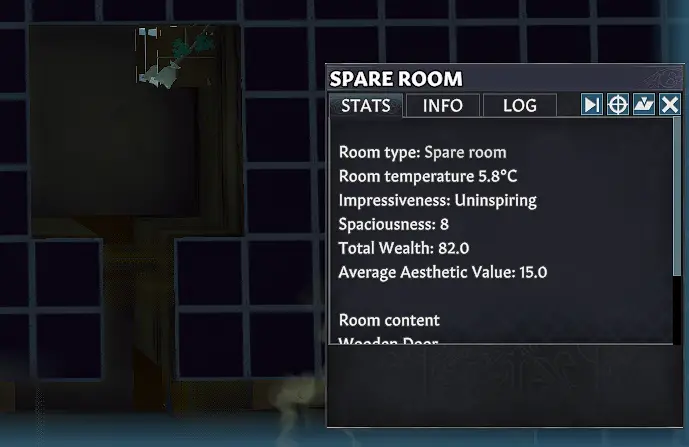
One Level of Dirt Above
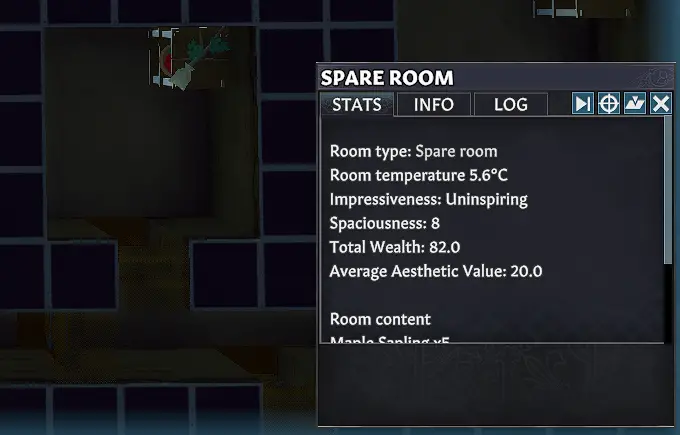
Two Levels of Dirt Above
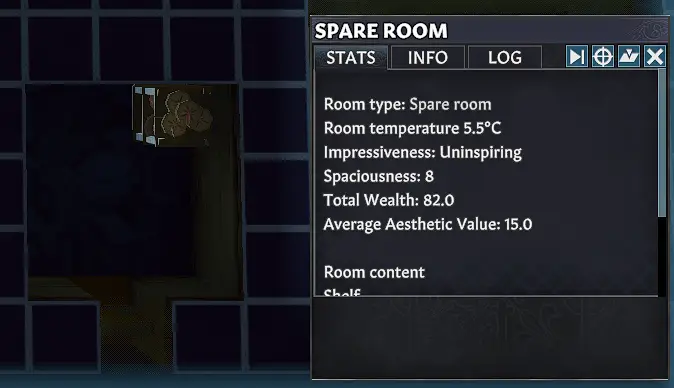
Three Levels of Dirt Above
While it may not be the most efficient use of your time on the first day when you’re rushing to set up your storage and prevent food spoilage, delving deeper into the ground can offer some advantages when establishing a more advanced storage system later in the game.
Flooring: Yes or No?
Flooring now functions as proper thermal insulation instead of generating heat. This means that you can safely install flooring in your storage rooms without worrying about increasing their temperature. In this comparison, I utilized the new wicker grated floor, which provides a thermal insulation value of 0.05, and the wooden flooring, which offers a thermal insulation value of 0.7. Both types of flooring are covered by three layers of dirt.
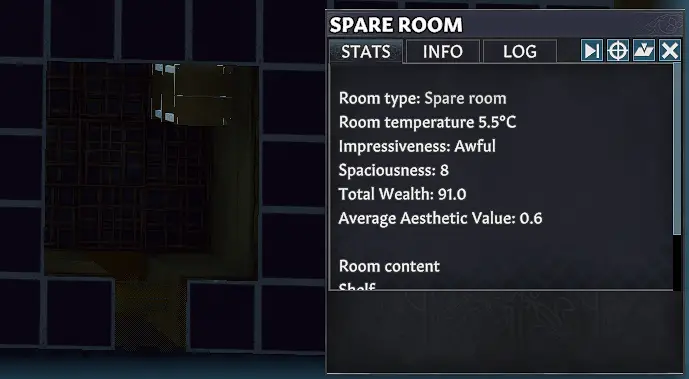
Wicker Grated Floor
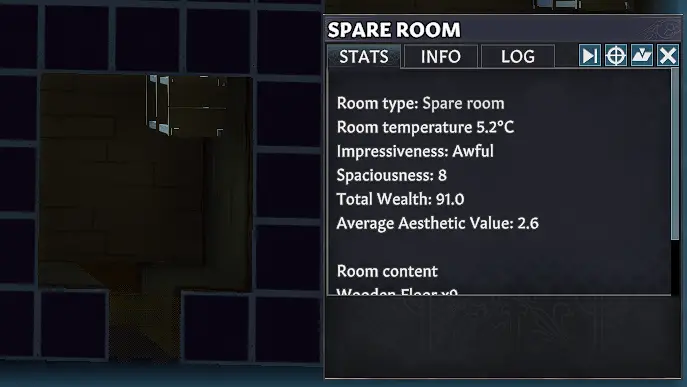
Wood Flooring
The comparison revealed that the grated flooring maintained the room at its default temperature for that level (5.5°ج), whereas the wood flooring slightly decreased it to 5.2°ج. Although the difference is minor, it holds significance.
What about Walls?
Considering that thermal insulation serves the purpose of trapping temperatures, it becomes advantageous to maximize its presence. لذلك, let’s incorporate walls into the setup. Clay walls possess the highest thermal insulation rating in the game, standing at 0.9. This makes them an ideal choice for constructing rooms.
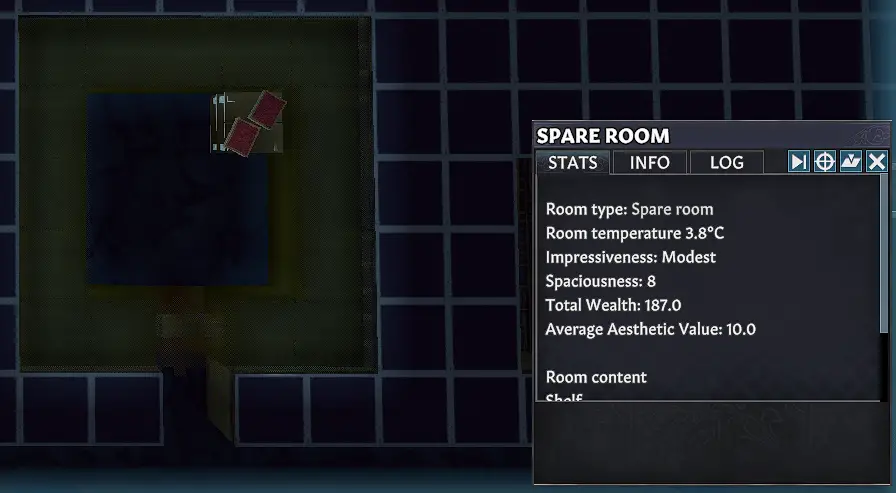
Upon enclosing the walls around a room, it was observed that a 3×3 area now registers a temperature of 3.8°ج. This outcome is remarkable as it demonstrates a substantial difference in temperature.
Size Do Matters
الآن, let’s consider the final factor: the impact of size. Does it truly matter? حسنًا, when it comes to storage cellars, size does indeed matter. في الحقيقة, the larger the cellar, the better. Smaller rooms tend to trap heat, resulting in higher temperatures. In the example provided, we can observe a room with 28 available squares of space, which maintains a temperature of 3.7°ج.
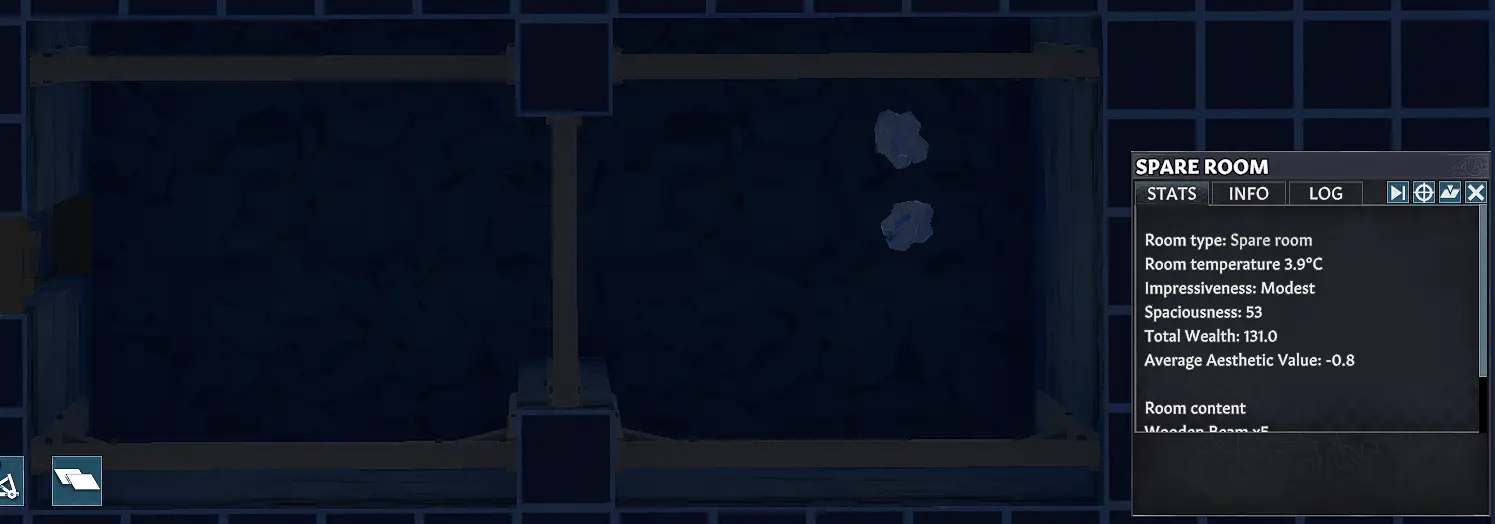
28 Square Room
Putting It All Together
Does the combination of all these features result in the most optimal storage room possible?
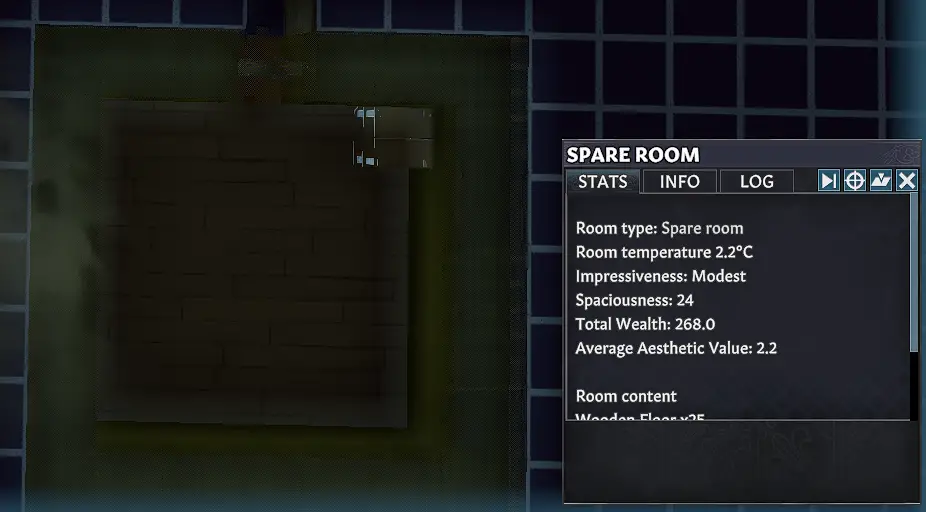
Large Room with Clay Walls and Wood Floors
The outcome of implementing these combined features is evident as the temperature has significantly decreased to 1.2°ج. This achievement is certainly worth celebrating! Although it doesn’t completely prevent food from gradually spoiling or deteriorating, it does ensure that the food remains preserved to the best extent possible. بالإضافة إلى ذلك, let’s be realistic, even in our real freezers, food doesn’t fare well after sitting for over a year.
Bonus Notes
- Ice can be highly beneficial in maintaining lower temperatures during the summer season. لكن, with the underground no longer reaching below 0°ج, the production of ice becomes limited to specific times. It is necessary to produce ice above ground during the winter months. Although ice cannot lower the temperature of a room below 0°ج, it can assist in keeping temperatures as low as possible during warmer months.
- During winter, you have the option to open doors in order to decrease the temperature of your storage area below freezing. By using ladders, the only wild animal that can access your storage area would be polecats. بدلاً عن ذلك, you can construct an outer wall to block access to the stairs while leaving the area unroofed, thus preventing animal entry.
- It’s important to note that most pets are unable to use ladders. While building downwards is a convenient space-saving solution, you will need to provide alternative locations for your pets’ food so they can access it.
تنصل
The testing was conducted on a valley map with normal difficulty settings. Screenshots were captured during the spring season. During the summer, with temperatures reaching 32°ج, the final storage room maintained a temperature of 2°ج. للأسف, a heatwave scenario could not be tested due to time constraints while speed running the game.
هذا كل ما نشاركه اليوم من أجل هذا Going Medieval مرشد. تم إنشاء هذا الدليل وكتابته في الأصل بواسطة Lyosha. في حالة فشلنا في تحديث هذا الدليل, يمكنك العثور على آخر تحديث باتباع هذا وصلة.
